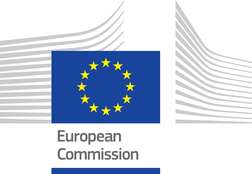PCP falls outside the scope of application of the European public procurement directives. This is because in PCP the procurer does not reserve all the benefits of the R&D exclusively for himself: in PCP the procurer leaves the IPR ownership rights attached to results generated by the R&D providers with the R&D providers. Accordingly, PCP is exempted from the EU public procurement directives based on Article 16(f) of the Directive 2004/18/EC on the coordination of procedures for the award of public works contracts, public supply contracts and public service contracts (Public Sector Directive), Article 24(e) of the Directive 2004/17/EC coordinating the procurement procedures of entities operating in the water, energy, transport and postal services sectors (Utilities Directive) and EU legislation replacing these, namely: Article 14 of Directive 2014/24/EU on public procurement and repealing Directive 2004/18/EC and, respectively, Article 32 of Directive 2014/25/EU on procurement by entities operating in the water, energy, transport and postal services sectors and repealing Directive 2004/17/EC, as well as article 13(f)(j) of Directive 2009/81/EC (Defence/Security Directive) which state that: “this Directive shall only apply to public service contracts for research and development services […] provided that both of the following conditions are fulfilled:
- the benefits accrue exclusively to the contracting authority for its use in the conduct of its own affairs, and
- the service provided is wholly remunerated by the contracting authority/entity”.
The main parties of the WTO Government Procurement Agreement, including the EC, have excluded R&D services from the scope of the WTO GPA (Article IV of the GPA). Therefore PCP is exempted from the WTO GPA on condition that the PCP is limited to original development (see question on what is covered by R&D) as defined in WTO GPA 1994 Article XV (1)(e) and in Article XIII(1)(f) of the revised WTO GPA 2014. However, these exempted R&D services still need to be procured in compliance with:
- the fundamental principles of the Treaty for the Functioning of the European Union (TFEU) and the principles deriving therefrom[1];
- the European Economic Area (EEA) and Stabilisation and Association Agreements with partner countries[2] of the European Neighbourhood Policy. In Horizon 2020 funded PCP projects, compliance needs to be ensured also with the Horizon 2020 association agreements.
- the EU competition rules, including in particular the conditions to ensure that PCP does not involve State aid that are defined in Article 33 of the R&D&I state aid rules.
- the provisions in WTO GPA 1994 Article XV (1)(e) and in Article XIII(1)(f) of the revised WTO GPA 2014 regarding subsequent supply contracts after the PCP has been completed.
As the TFEU principles and above mentioned EEA/Stabilisation and Association Agreements principles remain applicable, the public procurer must allow all interested bidders from all EU Member States, EEA and partners countries in the context of the European Neighbourhood policy to compete on equal terms for the PCP contracts, based on transparent and fair rules. According to WTO GPA 1994 Article XV (1)(e) and Article XIII(1)(f) of the revised WTO GPA 2014, the use of limited tendering in the PCP is not allowed to be employed to avoid maximum possible competition or discriminate among suppliers of other WTO Parties or to protect domestic suppliers in follow-up contracts for the supply. Consequently, with regards to bidders from other countries that are WTO signatory countries, the public procurer has two choices:
- If the public procurer does not allow bidders from those countries to submit offers for the PCP, the public procurer cannot limit the tendering for the purchase of the prototypes or first products/services developed during the PCP to the contractors from the PCP.
- If the public procurer allows bidders from those countries to submit offers for the PCP, the public procurer can limit the tendering for the purchase of the prototypes or first products/services developed during the PCP to the contractors from the PCP. Note that in this case, it is still possible to use a place of performance requirement that requires suppliers to perform a relevant part of the R&D services for the PCP contract in the territory defined by the EU, the EEA, and partner countries in the context of the European Neighbourhood policy. Please note that in Horizon 2020 funded PCP projects, the scope of the place of performance condition is even broader and includes also all countries associated to Horizon 2020[3] that are not in the EEA or in the European Neighbourhood policy. Because of the EEA and stabilisation/association agreements, it is not allowed to restrict the place of performance clause to R&D to be performed in the EU Member States. Because of the EU Treaty principles and competition rules, it is also not allowed to restrict the place of performance clause to R&D to be performed in a specific Member State, region or city in the EU.
The PCP Communication[4] and the PCP Staff Working Document[5] define an approach to implement PCP that is fully compliant with the applicable European and worldwide legal framework. [1] What needs to be complied with in particular include: the fundamental TFEU principles on the free movement of goods and workers, the freedom to provide services, the freedom of establishment and the free movement of capital, as well as the principles deriving there from, such as the principles of non-discrimination, transparency and equal treatment. [2] A list of countries with whom the EU has signed and association agreements on public procurement in the context of the EU Neighborhood Policy is available here: http://ec.europa.eu/growth/single-market/public-procurement/international/european-neighborhood-policy/index_en.htm [3] A list of countries associated with Horizon 2020 is available here: http://ec.europa.eu/research/participants/data/ref/h2020/grants_manual/hi/3cpart/h2020-hi-list-ac_en.pdf. [4] The Communication from the Commission to the European Parliament, the Council, the European Economic and Social Committee and the Committee of the Region, “Pre-commercial procurement: driving innovation to ensure sustainable high quality public services in Europe”, COM(2007) 799 final, 14.12.2007. [5] Commission’s Staff Working Document, SEC(2007) 1668, Example of a possible approach for procuring R&D services applying risk-benefit sharing at market conditions, i.e. pre-commercial procurement, 14 December 2007.




